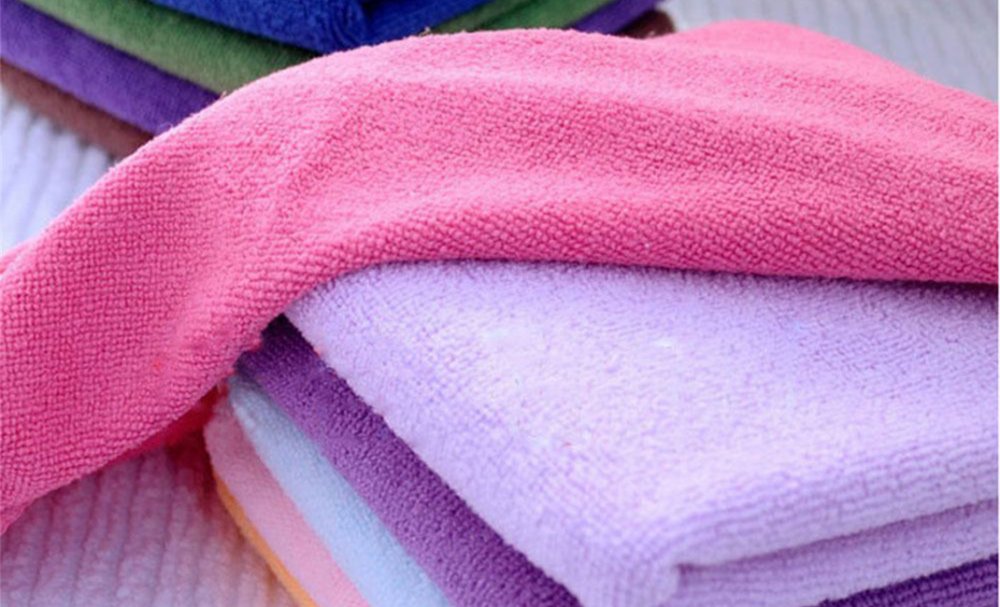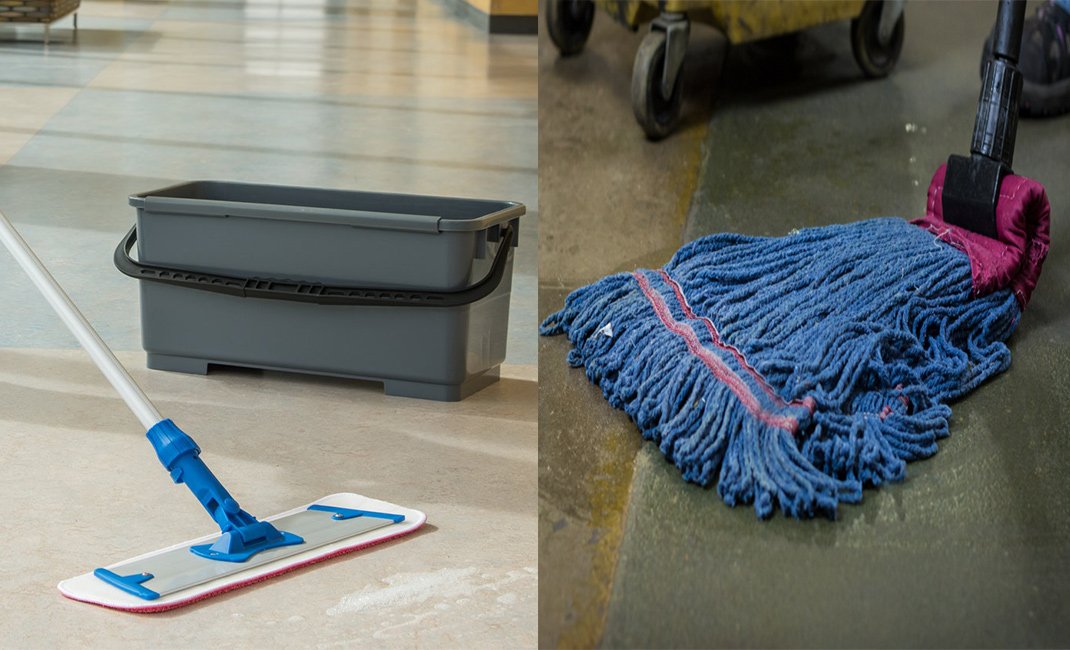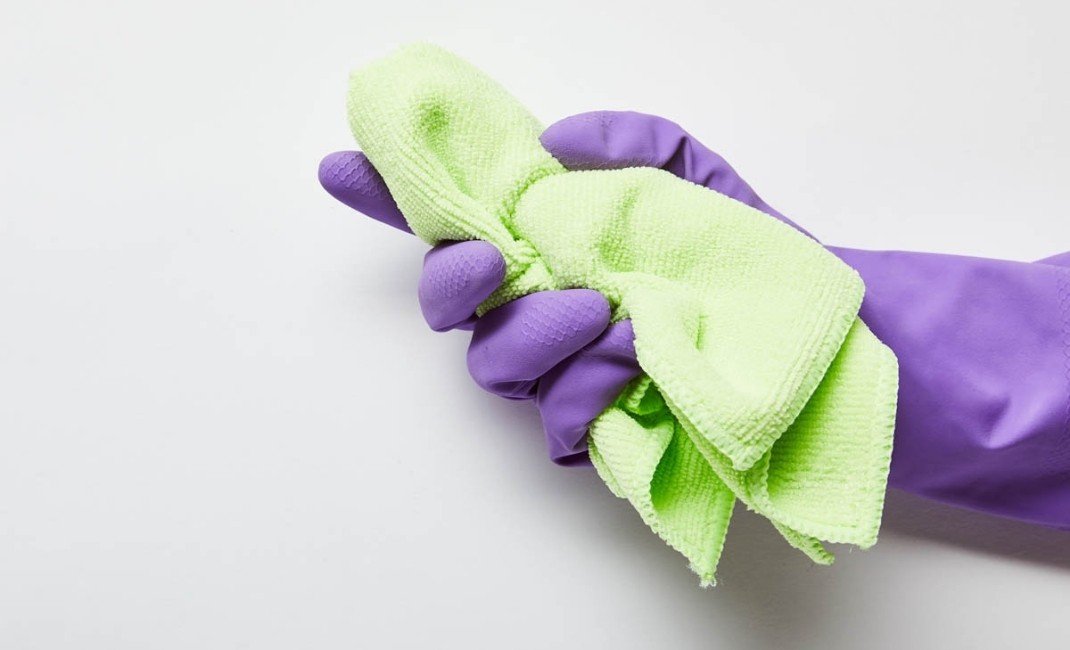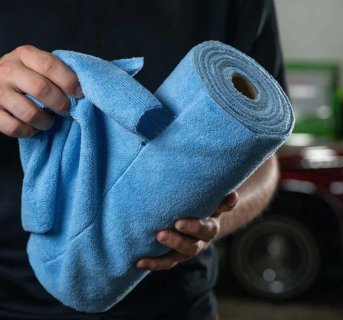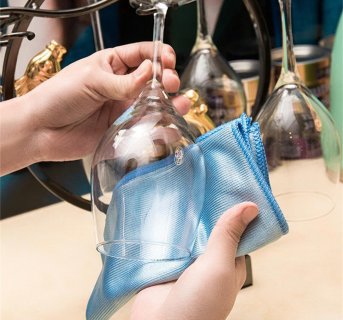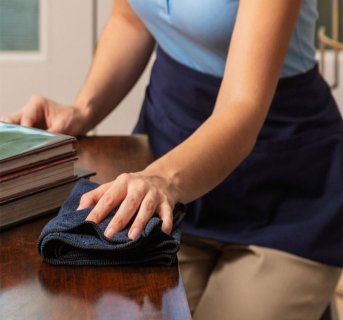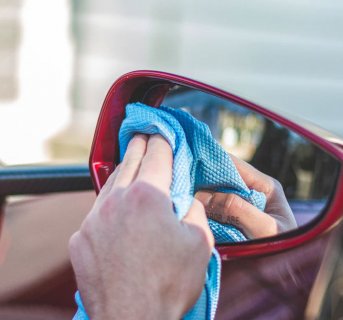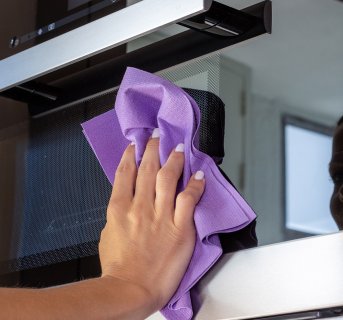Cotton advocates say the material is a good choice when bleach or acidic chemicals are required because they can break down and destroy microfiber cloths. They also prefer to use cotton on rough surfaces such as concrete, which could tear up a microfiber pad. Finally, they say cotton is helpful for mopping up large amounts of liquid because its fibers are longer and able to hold more than microfiber.
Some experts say that for a heavy bioburden it is preferable to use a cotton blend mop.
Microfiber would push around a big mess of bodily fluids, but it wouldn’t pick it up. You don’t want to stand there and use 10 microfiber cloths versus one traditional mop head. Of course, we go back over the surface with microfiber once the debris is removed.
However, others argue that there’s no situation where cotton outperforms microfiber. Even in the scenarios above, they claim microfiber would be a better choice than cotton, which only spreads soil and bacteria around, rather than picking up and removing it.
Microfiber came along 15 years ago and completely changed the old rag-and-bucket way of doing things. Microfiber has improved the cleaning process in a revolutionary way.
Better With Microfiber
Most argue that nine out of 10 times, microfiber will outperform cotton. When it comes to window cleaning, microfiber can trap dirt to prevent smearing and doesn’t leave lint behind. For floor finish, lightweight microfiber allows a user to more easily apply thin, smooth coats. Microfiber dusts without leaving lint and polishes without scratching or streaking.
Microfiber is also a more ergonomic choice than cotton. That’s because it requires less water. Using 10 to 30 times less liquid means microfiber weighs significantly less than cotton, which helps reduce the likelihood of injuries from lifting, moving, and wringing out a mop. Some argue it also means there are fewer slip-and-fall accidents because floors dry faster.
Reduced water usage, as well as less need for chemicals in the cleaning process, also makes microfiber the cloth of choice for facilities concerned with environmental sustainability.
The biggest benefit of microfiber, however, is for healthcare, schools, and other markets that put a high priority on infection control. A study by the U.S. Environmental Protection Agency found that extremely fine microfiber (.38 micrometer diameter) removes up to 98 percent of bacteria and 93 percent of viruses from a surface using only water. Cotton, on the other hand, removes only 30 percent of bacteria and 23 percent of viruses.
Microfiber also eliminates the problem of quat binding, which occurs when fabrics attract the active ingredients in quat-based disinfectants and reduce their efficacy. Experts comment that this is a big problem with cotton.
(www.labico.gr)

